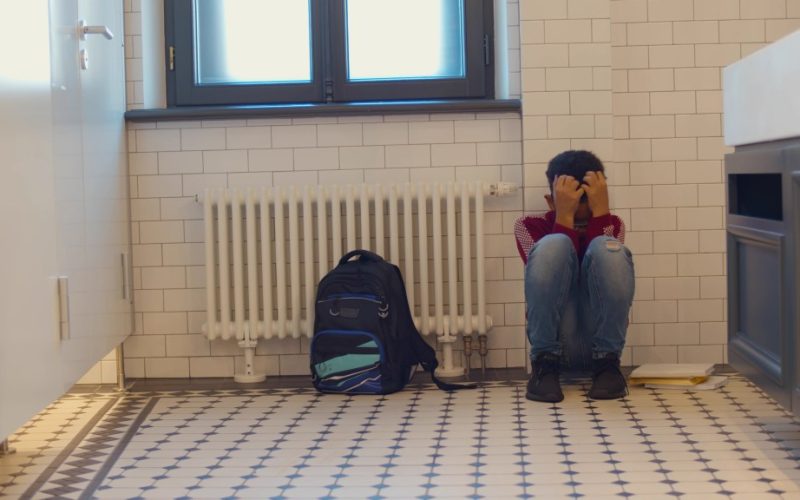The number of homeless students in New York City public schools peaked again last school year, according to a report released Monday — the second year in a row it reached an all-time high as immigrant families continued to seek asylum in the five boroughs.
More than 146,000 schoolkids slept in shelters or in the overcrowded homes of friends and extended family, an annual count from Advocates for Children of New York shows. With an increase of 23% since the year before, now about 1 in 8 children in the city’s school system know how it feels to lack a place to call home.
“It is unconscionable that, year after year, tens of thousands of students in this city don’t have a permanent home,” Jennifer Pringle, director of Advocates for Children’s students in temporary housing portfolio, said in a statement. “While the city works to help families find permanent housing, it must also focus more attention on helping students succeed in school. School can be the key to breaking the cycle of homelessness, but so many children, especially those in shelters, continue to fall behind.”
Student homelessness was particularly concentrated in upper Manhattan, the southwest Bronx, and parts of northeast and central Brooklyn, following a yearslong trend, the report found. For comparison, the advocates said, there were more students without permanent housing than there are seats in Citi Field and Yankee Stadium combined, whose lack of stability is having a profound effect on their education.
Migrants are pictured after arriving in New York City from Texas at the Port Authority Bus Terminal in Manhattan on Wednesday, September 6, 2023. (Luiz C. Ribeiro for NY Daily News)
When Aliyah Harriott moved into a shelter with her son, she was placed in the Bronx far away from the preschool he was attending for students with autism. He missed school for a week, until she found another program that would meet his needs. It would be another few weeks before he was placed on a school bus route, while she shuttled him to and from school. And even then, she could not find an after-school program for his age group and disability.
“It really prevented me from obtaining a job, from being able to work while I’m in the shelter,” said Harriott, 24, a single mom who was staying at Jackson Avenue Family Residence in Mott Haven.
“When you’re in a shelter, they give you this letter that says you’re mandated to work to obtain a [housing] voucher. In the same breath I had to let them know, I have to put my child somewhere safe, where he’s being taken care of, to have that job you’re talking about.”
Harriott and her son, who’s now in the first grade at Public School 132 Garret A. Morgan, have since moved out of the shelter into public housing. She got a job this month helping children with disabilities in a residential program, which she described as “what I wanted to do.” But she wishes they received more support.
“I wish they could’ve understood more how hard it is being a single parent,” Harriott said, “how hard it is getting your kid in school. Yeah, school is free, but applying, finding what fits for your kid — every kid is different.”

Chyann Tull, a spokeswoman for the public school system, said it has many supports in place for families in temporary housing, from field staff to assistance with enrollment, transportation and improved attendance. That may include some extra services not typically associated with classrooms — such as food and clothing donations, or hygiene supplies — that help students attend and succeed in school.
Last year, Tull added, the local school aid formula was revised to send additional dollars to schools enrolling homeless students.
“Our students who are experiencing homelessness are among our most vulnerable, and it is a continued priority at New York City Public Schools to provide them with the supports and resources they need to succeed in school,” Tull said.
Advocates say students who are homeless face more obstacles to doing well in school than their classmates. The most recent data show half of all students in temporary housing — and more than two-thirds of students in shelters — were considered chronically absent during the 2022-23 school year. They also scored lower in reading and writing tests, and dropped out of high school at triple the rates of their peers.
Those trends have compelled the advocates to push for more state education funding, as lawmakers revisit the school aid calculation known as Foundation Aid. The formula, which directs dollars based on individual students’ needs, does not account for their housing status, like it does for students with disabilities or other vulnerable groups
“Student homelessness has skyrocketed over the past decade, but right now, districts receive no additional per pupil funding from the state to help meet the educational needs of students in temporary housing,” said Kim Sweet, executive director of Advocates for Children.
“It’s critical that New York update the Foundation Aid formula to better support today’s students — including the roughly 1 in 8 students in New York City who do not have a permanent place to call home.”








